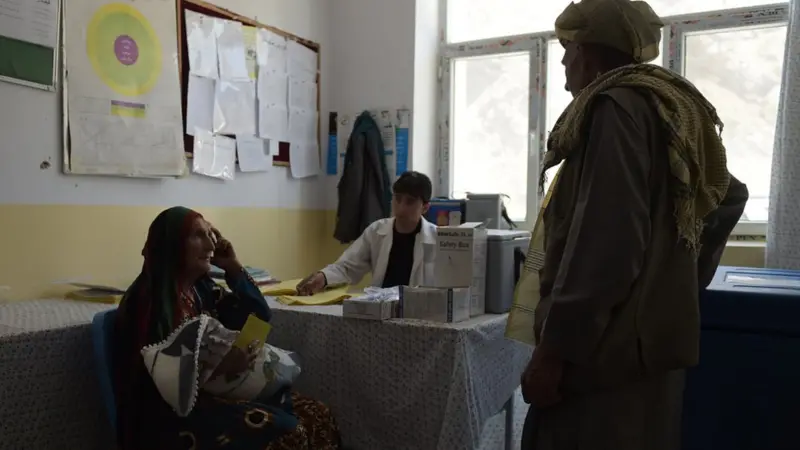In recent years, the state of healthcare services in most rural areas of Afghanistan has visibly deteriorated. Services provided by the government and international health organizations have significantly decreased compared to the past, creating severe challenges for many rural communities. Particularly, the lack of female doctors and the scarcity of medicines have triggered a major health crisis in these regions.
In numerous rural areas of Afghanistan, there are no female doctors, exacerbating the health situation for women and children. Furthermore, in many regions, medicines are either of poor quality or entirely unavailable. Male doctors also tend to leave rural areas for cities due to insufficient incentives, which is another serious issue. A clear example of this situation can be observed in Ghor province.
In Ghor, Sayed Awez, who brought his patient to the center in Feroz Koh, says, “I walked for eight hours with my patient to reach the center for treatment because there are no facilities in the local health center.” This highlights how the lack of healthcare services makes life extremely difficult for people. Similarly, in the Wardak province, Hazrat Wali, who has a patient in the Chak Araban hospital, states, “Our local hospital is severely lacking in professional staff, medicines, and medical equipment. The government and organizations need to take serious action.”
Despite these challenges, the absence of healthcare services has further worsened people’s lives. Regarding this issue, Sayed Wali from the Marjah area of Helmand province told our local reporter, “Over the past twenty years, this area has been severely affected by conflicts, and due to the fighting, there was no access to healthcare services. Now that the country is at peace, the government needs to pay serious attention to all health centers in Helmand.”
Besides these problems, rural health centers are facing a shortage of necessary equipment and professional staff. In most areas, people are forced to travel long distances to reach the nearest health center. Additionally, the lack of male doctors and the absence of female doctors have lowered the quality of healthcare services. The government and international health organizations must increase their efforts in this area to provide essential and emergency healthcare services to rural communities.
In summary, rural areas of Afghanistan are in dire need of emergency healthcare services. These issues can be addressed with the collaboration of the government and international health organizations. It is crucial to enhance healthcare services in rural areas to provide people with essential and standard healthcare services. Moreover, serious attention should be given to the equipment of health centers and the training of professional staff. Through these measures, the healthcare situation in Afghanistan’s rural areas will improve, and people will have access to essential healthcare services.
